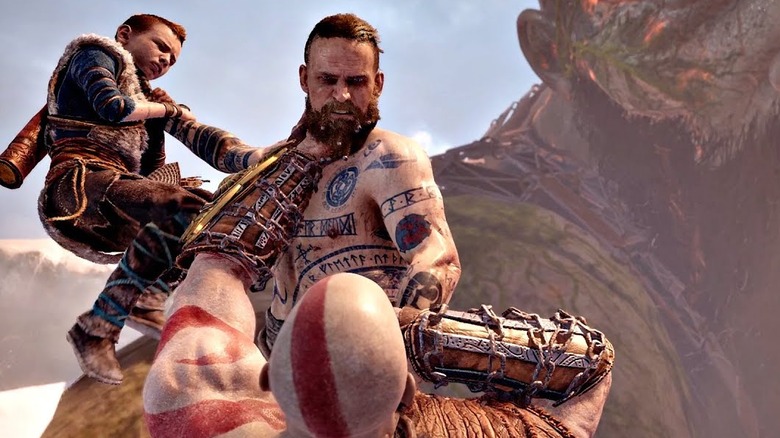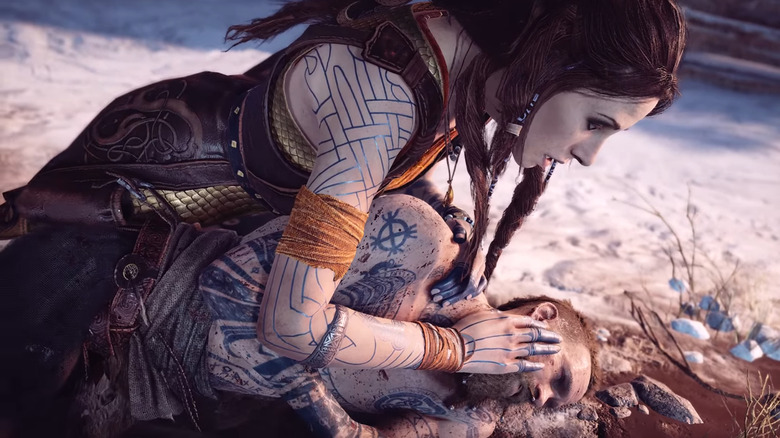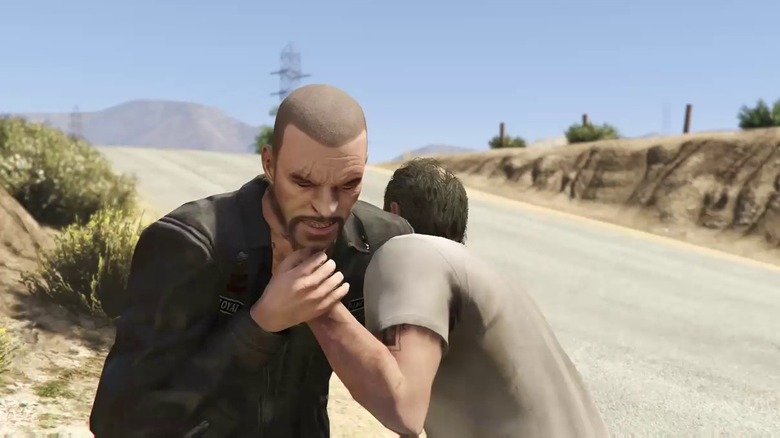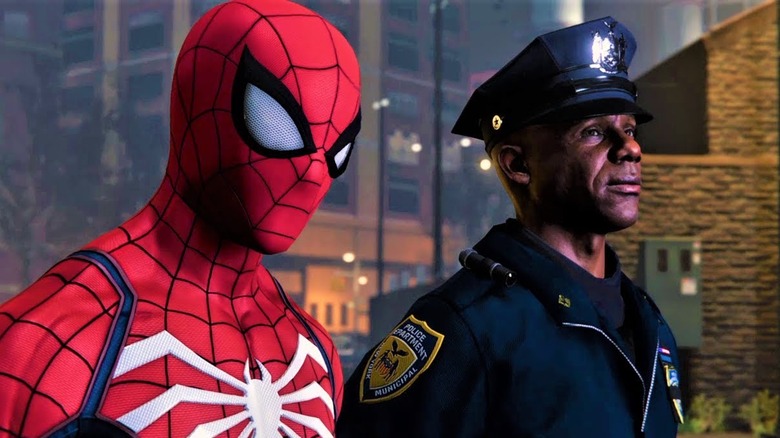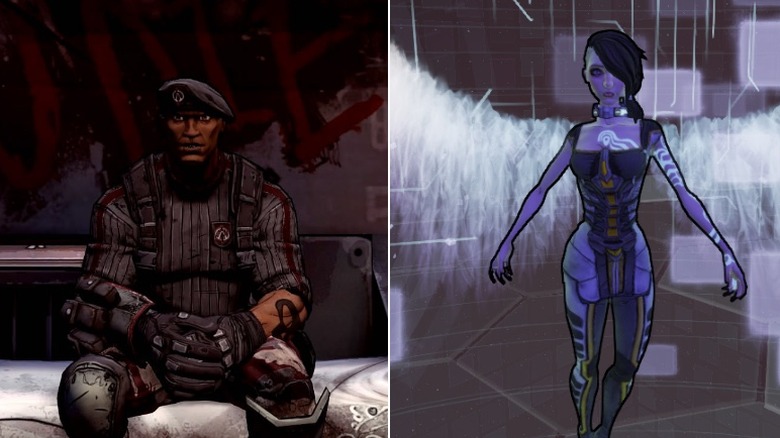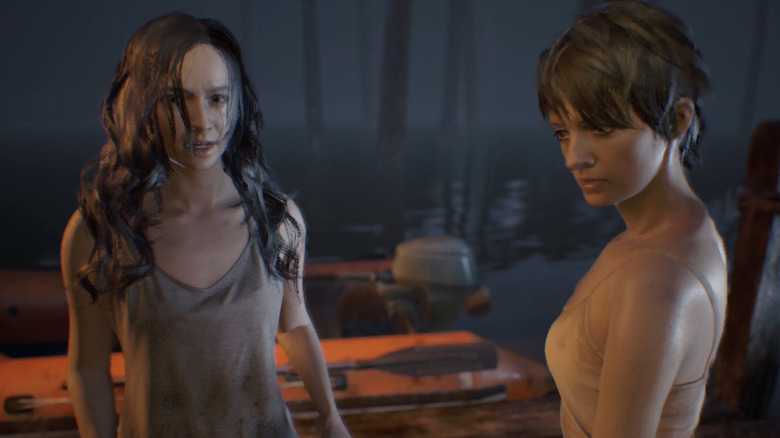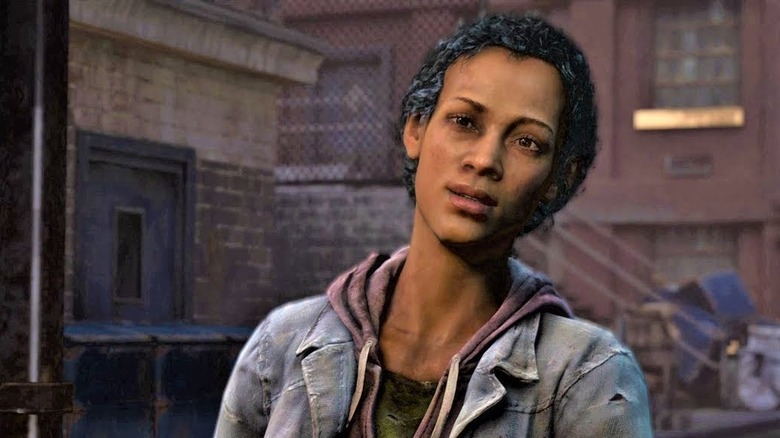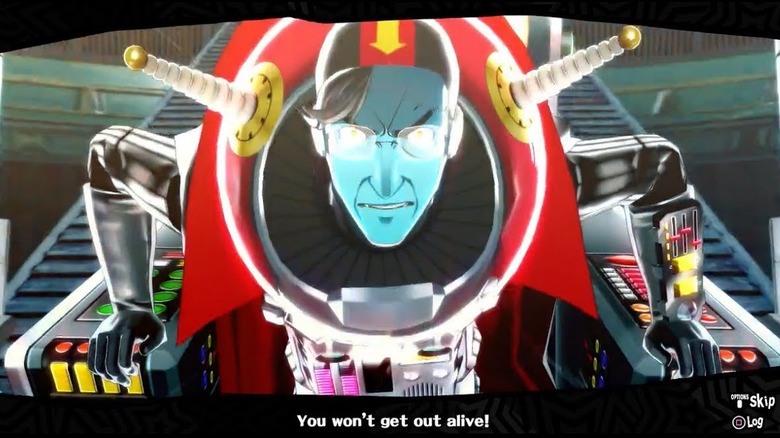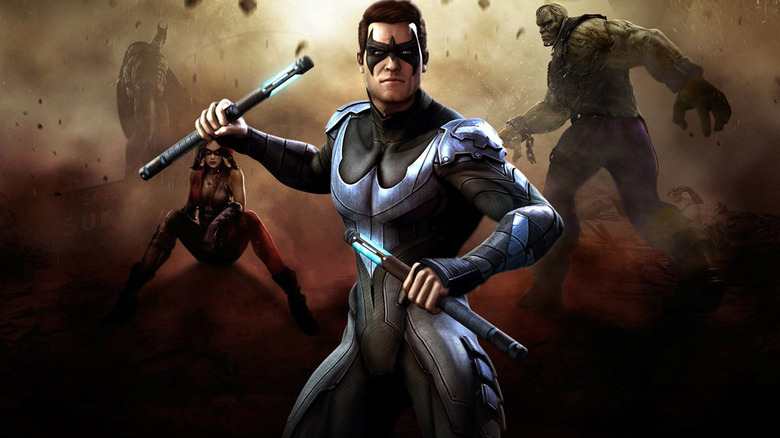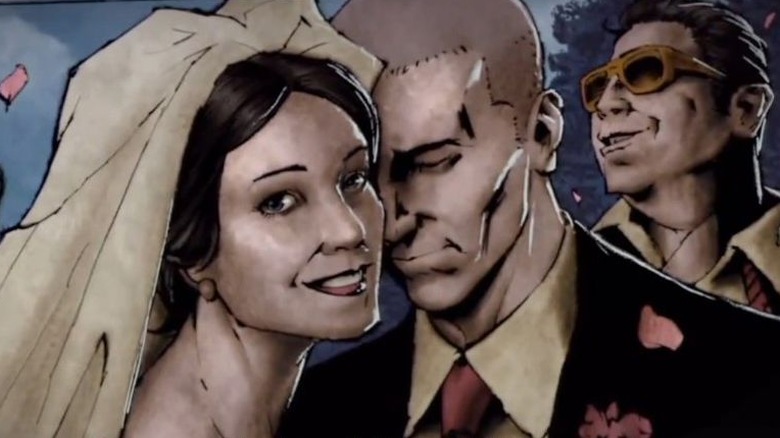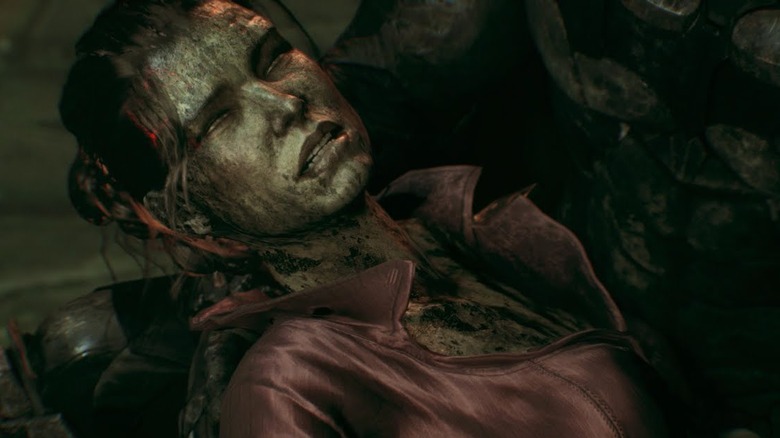The Real Reason These Game Characters Had To Be Killed Off
Even in the world of video games, death is a fact of life. Heck, Death itself is even a character in some video games. Sometimes, like with many of the more unfortunate NPCs in the Grand Theft Auto series or the bodies that litter the dark corridors of the Doom games, the deaths don't serve much of a purpose beyond shock value or morbid set dressing.
However, there are many instances where a fatality in a video game will serve to raise the stakes in a different way. These can spur our heroes on to be better people or to cross a point of no return. They can even grant new layers to our villains or change the way we view ourselves as players, giving us difficult, unenviable choices over the outcomes of the characters we've become invested in over many hours of gameplay. The following deaths all happened for a reason, so let's dig into these final moments and figure out the why of it all.
Beware: there will be major spoilers ahead for the events of several games.
Baldur - God of War (2018)
From the moment the seemingly invincible Baldur showed up on Kratos' doorstep and challenged him to a fistfight, it was clear that the mad god had to be taken out. However, his death serves a deeper purpose in the grander scheme of the God of War mythos, beyond simply adding yet another tally mark to Kratos' seemingly endless number of slain enemies.
For one, Baldur's bloody death in battle against Kratos sets in motion Freya's thirst for revenge. All through the final battle with Baldur, Freya begs Kratos and Atreus not to kill her son, who's ability to feel pain has been magically restored. While little is known about the next installment of the God of War series, it's quite likely that Freya's promise to "rain down every agony, every violation imaginable" will play some part in the events of the sequel.
In Norse mythology, Baldur's death also kickstarts Ragnarök, the final days of the gods. Such a momentous event will have to involve our heroes — and perhaps even Baldur's vengeful half-brother, if God of War's prophetic hidden ending is to be believed.
Johnny Klebitz - Grand Theft Auto 5
This one was a genuine shock to fans of the Grand Theft Auto series, as badass biker Johnny Klebitz had actually been around for quite a while before his fatal cameo in Grand Theft Auto 5. Johnny served as a supporting character in GTA 4 before becoming the lead character in the expansion The Lost and the Damned. He also appeared in another GTA 4 spinoff, The Ballad of Gay Tony. This isn't to say that Johnny was a lovable character, though, as IGN's review of The Lost and the Damned referred to Johnny as being "downright despicable."
Still, the mean nature of Johnny's character doesn't make the moment when GTA 5 protagonist Trevor stomps him to death any less of a surprise. Yes, in Trevor's introductory scene in GTA 5, Johnny makes a brief cameo appearance when he confronts Trevor over sleeping with Johnny's ex-girlfriend, which ends with Johnny being brutally murdered by Trevor. For players unfamiliar with Johnny, this scene illustrates how unpredictable and sadistic Trevor can be. For longtime Grand Theft Auto fans, however, they've seen Johnny live through so much chaos only to be killed by this new guy. It's brilliant shorthand on the writers' part that shows immediately that Trevor is a force to be reckoned with.
Jefferson Davis - Marvel's Spider-Man
Both Peter Parker and Miles Morales have had to learn that "with great power comes great responsibility." For Peter, that lesson came when he failed to stop the burglar who ended up killing his Uncle Ben Parker. In Miles' case, it came after his father, a heroic New York City police officer named Jefferson Davis, died in the act of protecting civilians from a supervillain attack.
Prior to his death, Jefferson assisted Spider-Man in tracking down members of the Demon gang run by the villainous Mister Negative. This mission created a bond between Jefferson and Peter, and Jefferson's death leads to Peter reaching out to Miles, who has no sense of direction after losing his dad. The partnership between Peter and Miles, as well as Miles' newfound sense of duty and responsibility, inspires Miles to protect the citizens of New York from the Sinister Six. That path eventually leads him to superpowers of his own. In other words, without Jefferson's heroic sacrifice, the world of Marvel's Spider-Man may have been deprived of another superhero.
Roland & Angel - Borderlands 2
Borderlands 2 served up not one, but two major character deaths, both of whom were featured prominently throughout the first and second installments in the series. First was Angel, the protagonists' guide through Pandora in the first two games, who turned out to be the daughter of Handsome Jack, the ruthless and power-hungry head of the Hyperion Corporation. Angel begs the heroic Vault Hunters to kill her, ending her life under Jack's thumb and theoretically stopping him from awakening and controlling the giant creature slumbering under the surface of the planet Pandora. The Vault Hunters succeed, but at a great cost.
In retaliation for Angel's death, Handsome Jack shoots and kills Roland, the Promethean Soldier who led the Vault Hunters on their mission against Jack. Roland's death in turn spurs on his ex-girlfriend, the powerful Siren named Lilith, to take the fight directly to Handsome Jack. These two untimely deaths ultimately make the game's final confrontations personal, despite the cosmic scale of the actual battle. These events also allow Angel to rest after a life of torture and Roland's legacy to go on to inspire a new generation of Vault Hunters to fight the good fight.
Mia or Zoe - Resident Evil 7: Biohazard
This death is interesting because the player is directly responsible for how it plays out. Toward the end of Resident Evil 7's storyline, after (seemingly) escaping the mutated Baker family, you are given a difficult choice: with one dose of the cure left, you must choose between saving your wife, Mia, or Zoe, a member of the Bakers who hasn't mutated yet. On the one hand, the reason you're out here in the first place is to find Mia. However, Zoe is basically the only reason you have survived this long, as she's been giving you clues and occasional weapons upgrades over the course of the game.
Either choice you make will presumably doom one of the women to a horrible fate. If you cure Mia, you'll get the game's good ending, but you'll have to live with the guilt of leaving Zoe to die after all she did for you. If you try to save Zoe, the cure won't fully work, Zoe will die in agony, and you'll eventually be forced to kill Mia in order to save your own skin.
Though Zoe is saved in one of Resident Evil 7's DLC chapters, this isn't revealed in the main game. Essentially, the choice is there to add to the stark feeling of hopelessness that runs through the story. It makes a horror game even more horrific, only here, the horror is on a more emotional level.
Marlene - The Last of Us
After the apocalyptic zombie outbreak of The Last of Us, a group called the Fireflies forms. The goal of the Fireflies is to try to find a cure for the plague, as well as fight back against the martial law that has taken hold of much of the United States. The leader of the Fireflies is a woman named Marlene, an acquaintance of lead protagonist Joel. She charges Joel with bringing Ellie, a young girl who is seemingly immune to the plague, to the Firefly's facility in Salt Lake City.
When Joel and Ellie finally arrive, however, Joel learns that the Firefly's plans to reverse-engineer a vaccine would result in Ellie's death. Determined to save his newfound daughter figure, Joel essentially dooms the human race's chance at a cure and, along with killing several Firefly scientists in cold blood, shoots Marlene in the head and leaves the facility.
While The Last of Us is filled with difficult decisions and horrible executions, Marlene's death in particular solidifies many of the game's themes of survival, no matter the mark it leaves on one's soul. It draws a strong line, one that Joel cannot uncross. It's also possible that Ellie doesn't believe Joel's story in the game's ending scenes about Marlene and the Fireflies simply giving up on finding the cure. This distrust will likely play a huge factor in Joel and Ellie's evolving relationship when we see them again in The Last of Us Part 2.
Kunikazu Okumura - Persona 5
The brutal death of corrupt businessman Kunikazu Okumura has a lasting effect on the heroes of Persona 5, who enter the mind of wicked people in order to change their ways. Shortly after entering Kunizaku's subconscious, the heroic Phantom Thieves are joined by a new team member, Kunizaku's daughter, Haru. With Haru's help, the Phantom Thieves manage to defeat the manifestation of Kunikazu's dark side and begin a new change of heart in him. Unfortunately for the heroes, Kunikazu dies during a press conference shortly after his encounter with the Phantom Thieves, essentially making the world believe that they had something to do with his untimely end.
Kunikazu Okumura's death, though shocking, proves to be a major turning point for the game's story, as it leads to the public and the media turning against the Phantom Thieves. It also strains Haru's newfound friendship with the other Phantom Thieves, which is a major plot point that carries through the rest of the game. It brings them all crashing back down to reality in a major way, as it leads them to doubt their entire crusade.
Nightwing/Dick Grayson - Injustice: Gods Among Us
This death is pretty unique, in that it doesn't occur on-screen. However, that doesn't make it any less important to the characters who are forever changed by it. Dick Grayson, Batman's first Robin and later the vigilante Nightwing, fell in battle before the events of the first Injustice game. The death itself is seen in the Injustice tie-in comics, where Dick is killed by Bruce Wayne's son and then-Robin, Damian. However, the game itself saves the revelation of Dick's death for later in the story, making it a surprise when the violent Nightwing working for the Injustice universe's psychotic Superman is revealed to be Damian Wayne, who took the identity following Grayson's death.
Aside from the inherent shock in this twist, it also solidifies the feeling that this universe's Batman is alone against impossible odds. With his closest ally deceased and said ally's murderer (his own son!) having taken his place, Batman seems more emotionally isolated than ever, and the fight against Superman's Regime becomes even more personal. It also means the alternate universe heroes who come to Batman's aid have an uphill battle ahead of them to earn this Batman's trust, especially after the betrayal he's suffered.
In an interesting turn of events, the canonical comic series based on the game's story shows Dick Grayson's ghost eventually taking the heroic identity of Deadman. This evolution of his character wouldn't have been possible without the initial tragedy.
Trish - Infamous
As part of its Karma gameplay mechanic, where your actions will change the heroic or evil alignment of your character, Sucker Punch Studios' Infamous constantly throws moral decisions at the player. These decisions all contribute to lead character Cole MacGrath's development and the types of destructive powers he manifests, as well as which ending the player gets. Many of these choices have been criticized for being fairly obvious, with The Game Critique pointing out, "Reasoning in later choices makes less and less sense as you continue on. The options in the early choices are both justified, while later ones seem to prove that you have a problem with rational thought." One decision, however, will always end in tragedy for Cole.
Toward the end of Infamous, Cole is presented with the choice between saving Trish, the love of his life, or six medical doctors. Saving the doctors will lead to Trish plummeting to her death, telling Cole in her last moments that she's proud of the hero he's become. Trying to save Trish and letting the doctors perish will still result in Trish's death, who will tell Cole in this timeline how ashamed she is of him. Regardless of the Karmic choice, Trish's death is all part of main villain Kessler's plan to isolate Cole and strengthen his resolve, reasoning that Cole will be a better match for the coming evil without the distraction of love.
Poison Ivy - Batman: Arkham Knight
In Batman: Arkham Knight, Poison Ivy sacrifices her life to help clear Gotham City of Scarecrow's toxins, which were resulting in the deaths of many of Gotham's citizens. In order to do this, she absorbed a lethal dose of the toxin. As Batman held her in his arms, she collapsed into dust, telling the Dark Knight, "Nature always wins." After Ivy's death, Batman can return to the place where she died to find a single flower blooming in that spot.
In a way, Poison Ivy's death brings the series full circle. Her character was present in all three of Rocksteady's Arkham games. Going from a major enemy in Arkham Asylum to a tragic hero in Arkham Knight, Ivy's last act also shows that even one of Batman's most determined foes can be redeemed in her own way. This should also prove to Batman that even his former partner, now the villainous Arkham Knight, can be saved as well. Ivy's death proves that it may never be too late to become a hero.

